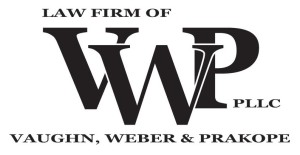Pay as You Earn Student Loan Program
What is a Pay As You Earn Student Loan program?
According to StudentAid.Gov, the pay as you earn repayment plan is designed to make student loan payments more affordable by reducing monthly payments based on your income and family size.
Eligibility
In order to qualify for the program you must have partial financial hardship. This means that the amount you would be required to pay on your federal student loans is higher than the monthly amount you would owe under the Pay As You Earn Repayment plan. Your federal student loan must be eligible for the program; this includes certain types of Federal Family Education Loan Programs (FEEL Program), including Subsidized and Unsubsidized Federal Stafford Loans, Federal PLUS Loans made to graduate or professional students, Federal Consolidation Loans that did not repay any PLUS loans for parents. Borrowers must have taken out their loans as of October 1, 2007 and must have received a disbursement of a Direct Loan on or after Oct. 1, 2011. To be a new borrower that qualifies, you can’t have an outstanding balance on a Direct Loan or FEEL Program loan as of Oct. 1, 2007 or had an outstanding balance on a Direct Loan or FEEL Program loan when you received a new loan on or after October 1, 2007.
Benefits of Pay As You Earn
- Your monthly payment amount will be less than the amount you would be required to pay under a 10-year Standard Repayment Plan, and may be less than under other repayment plans.
- In some cases, the government will pay your unpaid accrued interest on your Direct Subsidized Loans (and on the subsidized portion of your Direct Consolidation Loans) for up to three consecutive years from the date you begin repaying your loans under Pay As You Earn.
- Any remaining balance will be forgiven after 20 years of qualifying repayment.
- On-time, full monthly payments you make under Pay As You Earn (or certain other repayment plans) while employed full-time in a public service job will count toward the 120 monthly payments that are required to receive loan forgiveness through the Public Service Loan Forgiveness (PSLF) Program.
- Once you qualify for Pay As You Earn, you can continue making your reduced payments under the program even if you no longer qualify for partial financial hardship.
You should contact your loan servicer to determine if your eligible for Pay As You Earn. You can also check this calculator to see if you will likely qualify and what your payments might be.
Bankruptcy Attorneys in Long Island
Call (516) 858-2620 for Student Loan assistance. The Law Firm of Vaughn, Weber & Prakope, PLLC is here to assist you!
Short Sale
I already modified my mortgage, but because of new circumstances I am late again. Must I Short Sale my home now?
Not necessarily.
You may be able to get another loan modification based on your “new circumstances.” The HAMP guidelines were recently changed to address this situation. Homeowners who have defaulted on a trial or permanent HAMP loan modification are now eligible for a new HAMP loan modification. Additionally, the bank can always offer you an in-house loan modification if they want to. You may have several other options you can explore before doing a short sale. One of your options may be a chapter 13 bankruptcy. We have developed several strategies to assist distressed homeowners. A Short Sale is never the first option! It may be a good idea to consult with an attorney before making a final decision.
Foreclosure Defense Attorneys
Call the Law Firm of Vaughn, Weber & Prakope, PLLC at (516) 858-2620 to discuss your options.



Keep in Touch